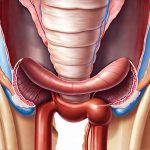The intricate relationship between our musculoskeletal system and internal organs is often underestimated. While we commonly associate spinal misalignment with back pain or postural issues, its potential impact extends far beyond these obvious symptoms. The nervous system acts as the body’s central communication network, relaying signals between the brain and every organ, including the bladder. A misaligned spine can potentially interfere with this vital communication pathway, leading to disruptions in bladder function. Understanding this connection is crucial for holistic health assessments and exploring comprehensive treatment approaches.
Bladder dysfunction manifests in a variety of ways – from frequent urges to urinate, difficulty starting or stopping urination, incontinence, and even chronic pelvic pain. These issues can significantly impact quality of life, causing anxiety, social isolation, and emotional distress. Often, the focus remains on treating the symptoms directly with medication or behavioral therapies. However, addressing underlying structural imbalances, like a misaligned spine, may offer a complementary approach to restoring optimal bladder control and reducing reliance on purely symptomatic treatments. This is not about replacing conventional care but exploring integrative options that address the root cause alongside symptom management.
Spinal Misalignment & Neurological Pathways
The spinal cord serves as the major highway for nerve impulses traveling between the brain and the rest of the body. Nerves branching off the spinal cord innervate the bladder, controlling its muscular contractions and relaxation responsible for storing and emptying urine. Subluxations, or misalignments in the spine, can compress or irritate these nerves, disrupting their normal function. This interference can alter the signals sent to the bladder, causing it to overreact (leading to urgency) or underreact (resulting in retention). The location of the misalignment matters significantly; different spinal levels correspond to nerve pathways controlling different aspects of bladder function.
Consider a misalignment in the lumbar spine (lower back), where nerves governing pelvic floor muscles originate. A compressed nerve could weaken these muscles, reducing their ability to support the bladder and urethra, contributing to stress incontinence. Conversely, misalignments higher up the spine can affect the autonomic nervous system – responsible for involuntary functions like bladder control – leading to more complex dysfunctions. It’s important to remember that this isn’t a direct one-to-one relationship; nerve compression doesn’t always cause symptoms, and many other factors contribute to bladder issues. However, it presents a plausible mechanism by which spinal misalignment could play a role. You may also want to explore if hormonal drops affect female bladder function.
Furthermore, the nervous system is not merely a passive conduit but actively modulates function. Chronic stress or postural imbalances can lead to muscle tension that further exacerbates nerve compression, creating a vicious cycle. Restoring proper spinal alignment and addressing associated muscle imbalances are key elements in potentially alleviating these neurological disruptions.
The Role of Pelvic Floor Dysfunction
Pelvic floor muscles play a vital role in bladder control by providing support for the bladder and urethra. They work in coordination with other muscles to regulate urination. Spinal misalignment, as previously mentioned, can impact nerve function affecting pelvic floor muscle strength and tone. However, even without direct spinal involvement, a misaligned spine can contribute to overall postural imbalances that indirectly strain the pelvic floor. For example, prolonged forward head posture or rounded shoulders shift weight distribution, placing increased stress on the lower back and pelvis.
This altered biomechanics can lead to pelvic floor dysfunction – a condition characterized by either weakness or overactivity of these crucial muscles. Weakened pelvic floor muscles may struggle to support the bladder during activities that increase abdominal pressure (coughing, sneezing, lifting), leading to leakage. Conversely, an overly tight or hypertonic pelvic floor can restrict blood flow and nerve function in the area, causing urgency, pain, and difficulty emptying the bladder completely. Addressing spinal alignment is often a crucial first step towards restoring optimal pelvic floor function. This may involve manual therapy techniques to release muscle tension, postural exercises to correct imbalances, and targeted rehabilitation programs to strengthen or relax the pelvic floor muscles as needed. If you suspect issues with bladder stones, consider if a urinalysis detect them.
Diagnostic Approaches & Considerations
Pinpointing the connection between a misaligned spine and bladder dysfunction requires a thorough evaluation that goes beyond standard urological assessments. A comprehensive history should include questions about posture, movement patterns, previous injuries, and any chronic pain conditions. Physical examination is essential, focusing on spinal alignment, range of motion, muscle imbalances, and pelvic floor function. Specific orthopedic tests can help identify nerve compression or irritation.
- Neurological assessment: Checks for reflexes, sensation, and strength in the lower extremities to assess nerve function.
- Postural analysis: Identifies postural deviations that may contribute to spinal misalignment and pelvic floor dysfunction.
- Palpation: Gentle manual examination of the spine and surrounding tissues to identify areas of tenderness or restriction.
- Pelvic Floor Evaluation: A trained healthcare professional can assess pelvic floor muscle strength, tone, and coordination through internal or external techniques.
Imaging studies, such as X-rays or MRI scans, may be used to visualize spinal alignment and rule out other potential causes of bladder dysfunction. However, it’s important to remember that imaging alone is often insufficient; a clinical evaluation by a skilled practitioner is essential for interpreting the findings and developing an appropriate treatment plan. It’s also worth considering whether a full bladder trigger pain in women.
Integrative Treatment Strategies
Addressing the link between spinal misalignment and bladder function requires an integrative approach that considers both structural and neurological factors. Chiropractic care focuses on restoring proper spinal alignment through gentle adjustments, aiming to reduce nerve compression and improve nervous system function. Physical therapy plays a crucial role in strengthening pelvic floor muscles, correcting postural imbalances, and improving overall movement patterns.
- Manual Therapy: Techniques like myofascial release can address muscle tension contributing to spinal misalignment and pelvic floor dysfunction.
- Postural Re-education: Exercises designed to improve posture and body awareness, reducing strain on the spine and pelvis.
- Neuromuscular Re-education: Techniques to retrain pelvic floor muscles and restore optimal coordination.
In addition to these manual therapies, lifestyle modifications such as maintaining a healthy weight, staying hydrated, and avoiding bladder irritants (caffeine, alcohol) can also contribute to improved bladder control. It is crucial to work with a healthcare team that includes medical doctors, chiropractors, physical therapists, and potentially other specialists to develop a personalized treatment plan tailored to individual needs and circumstances.
Long-Term Management & Prevention
Once improvements are achieved, ongoing maintenance is essential for preventing recurrence. Regular exercise, maintaining good posture, and managing stress levels can all contribute to long-term spinal health and bladder control. Incorporating mindfulness practices like yoga or meditation can help reduce muscle tension and improve body awareness.
Preventative measures also include ergonomic adjustments in the workplace and home to minimize strain on the spine and pelvis. Early intervention is key; addressing minor postural imbalances before they become chronic problems can significantly reduce the risk of developing bladder dysfunction. Ultimately, a holistic approach that prioritizes spinal health, pelvic floor function, and overall wellbeing offers the best chance for long-term success in managing bladder issues related to spinal misalignment.





















